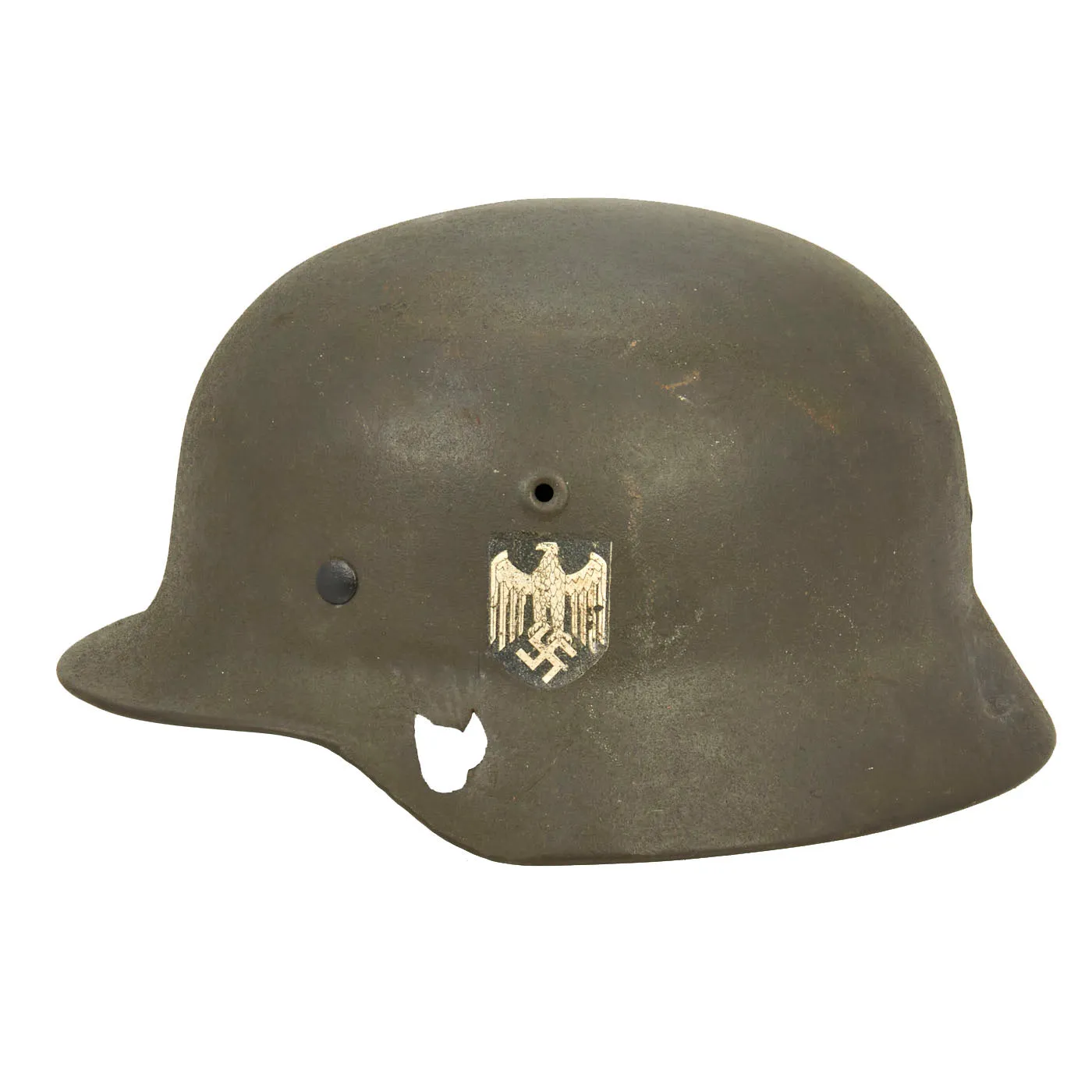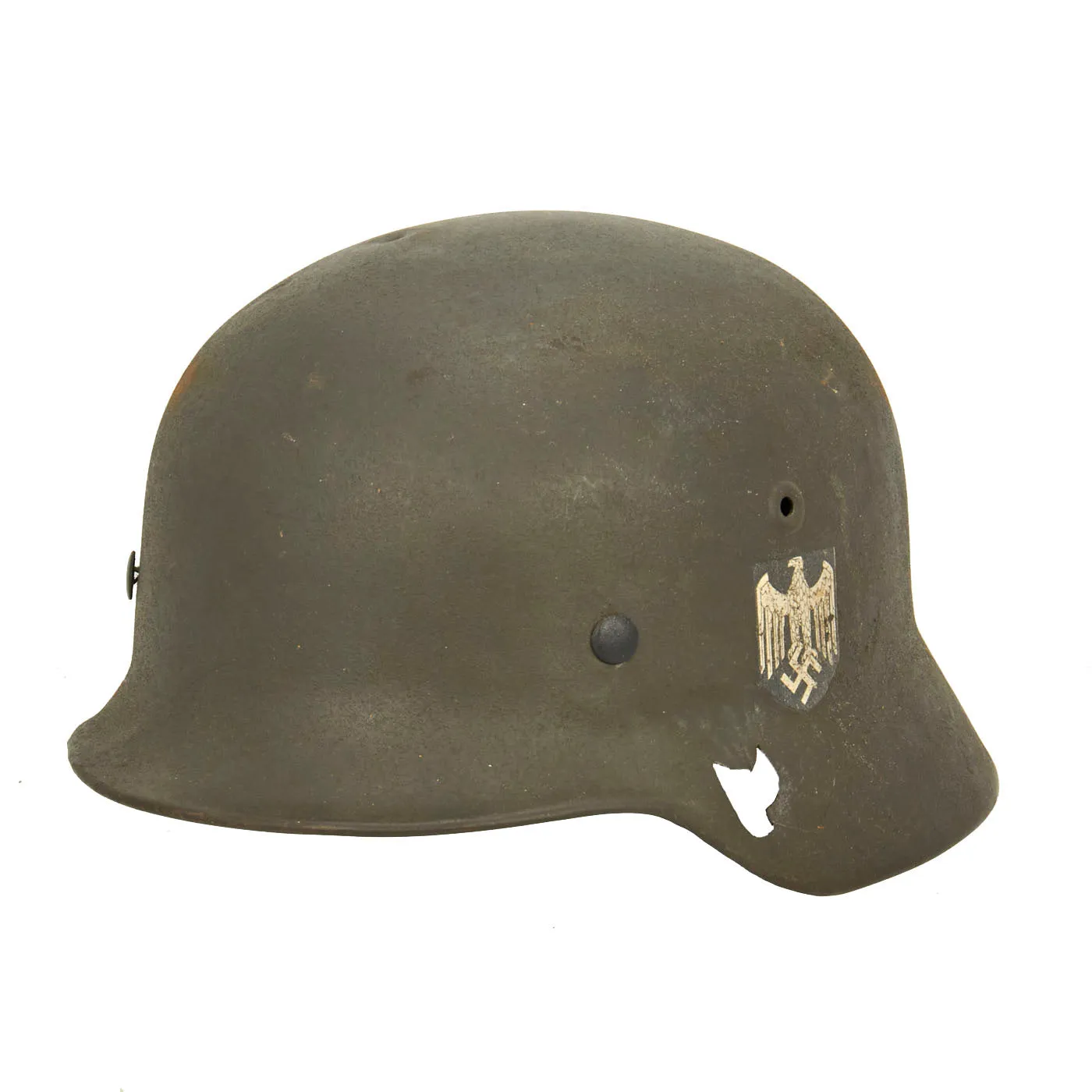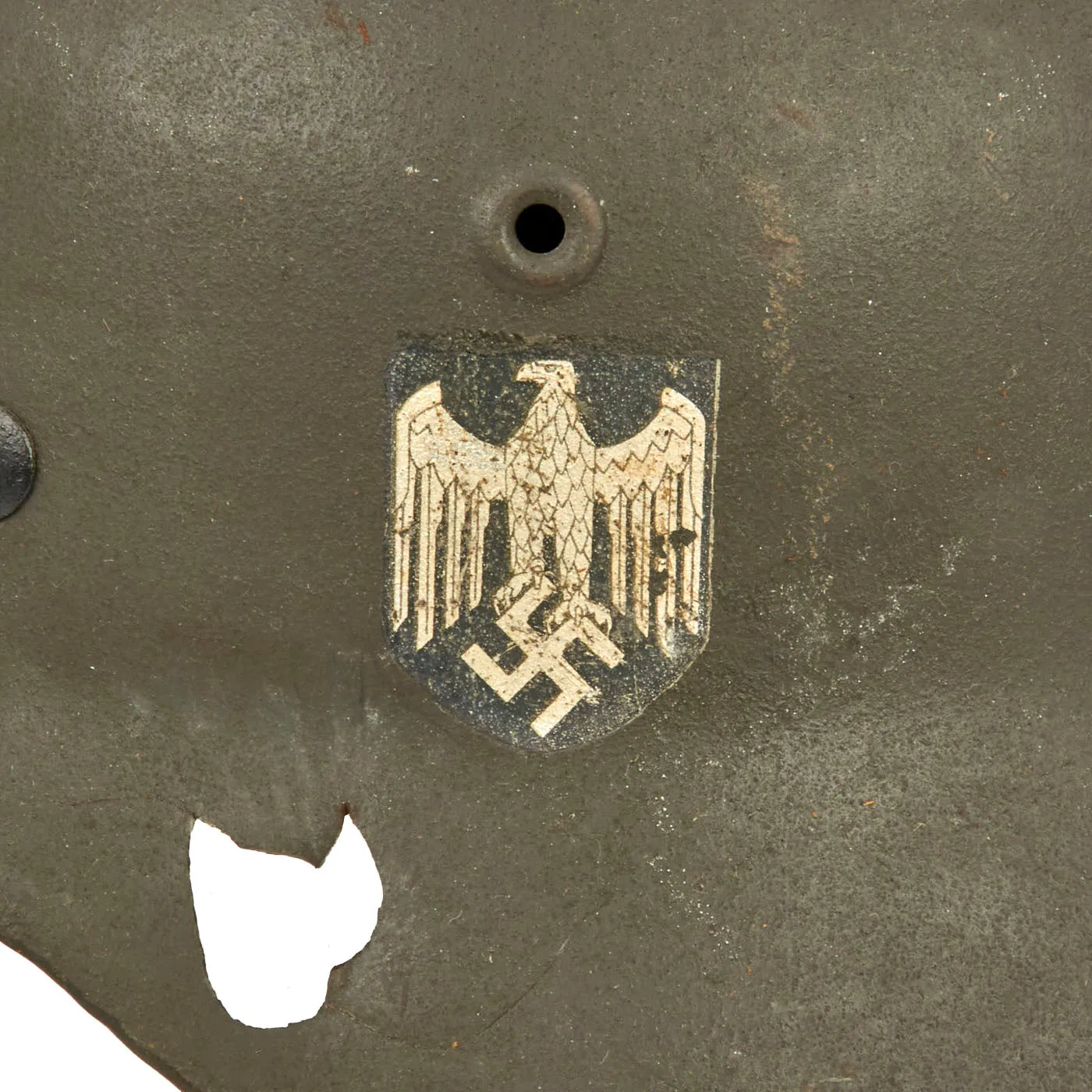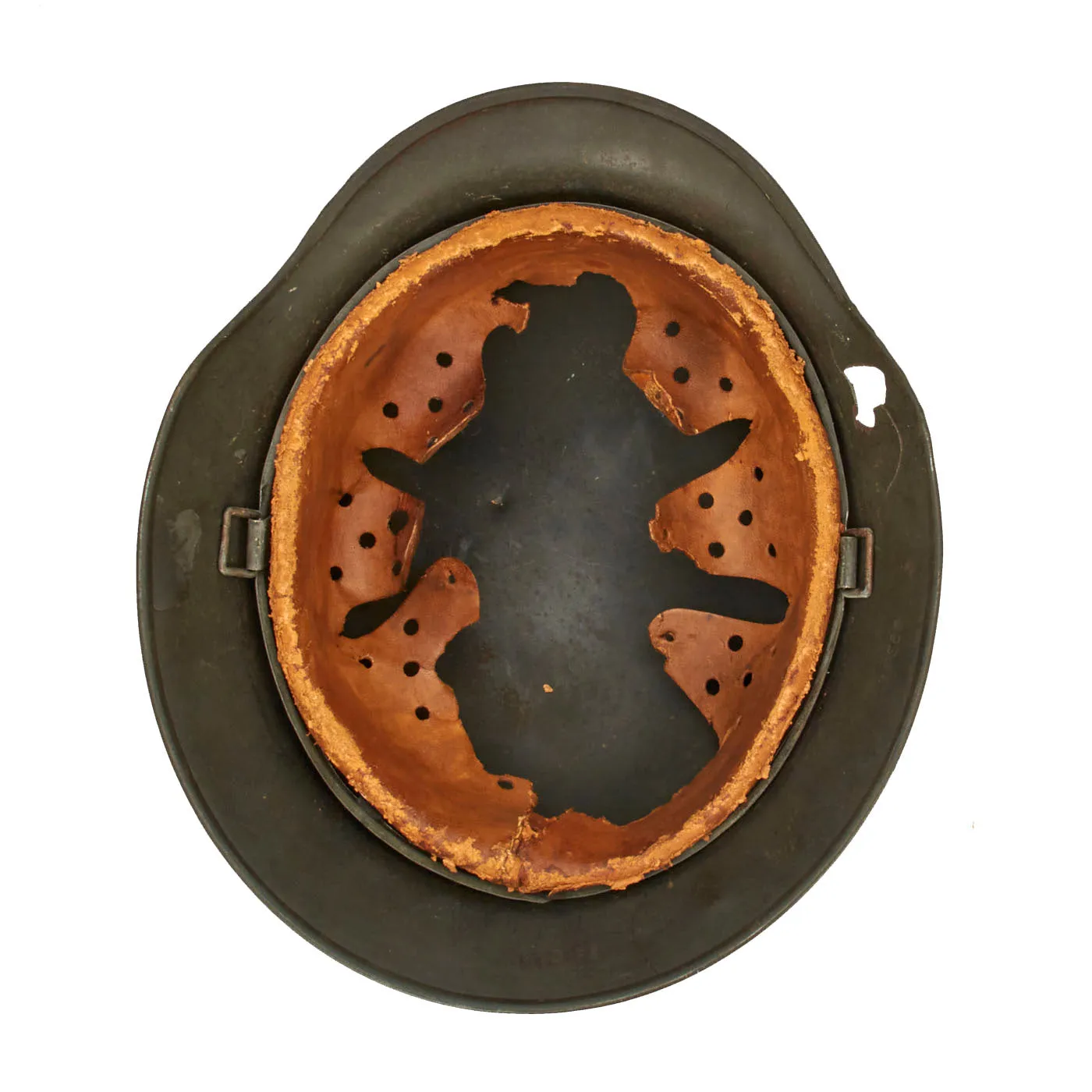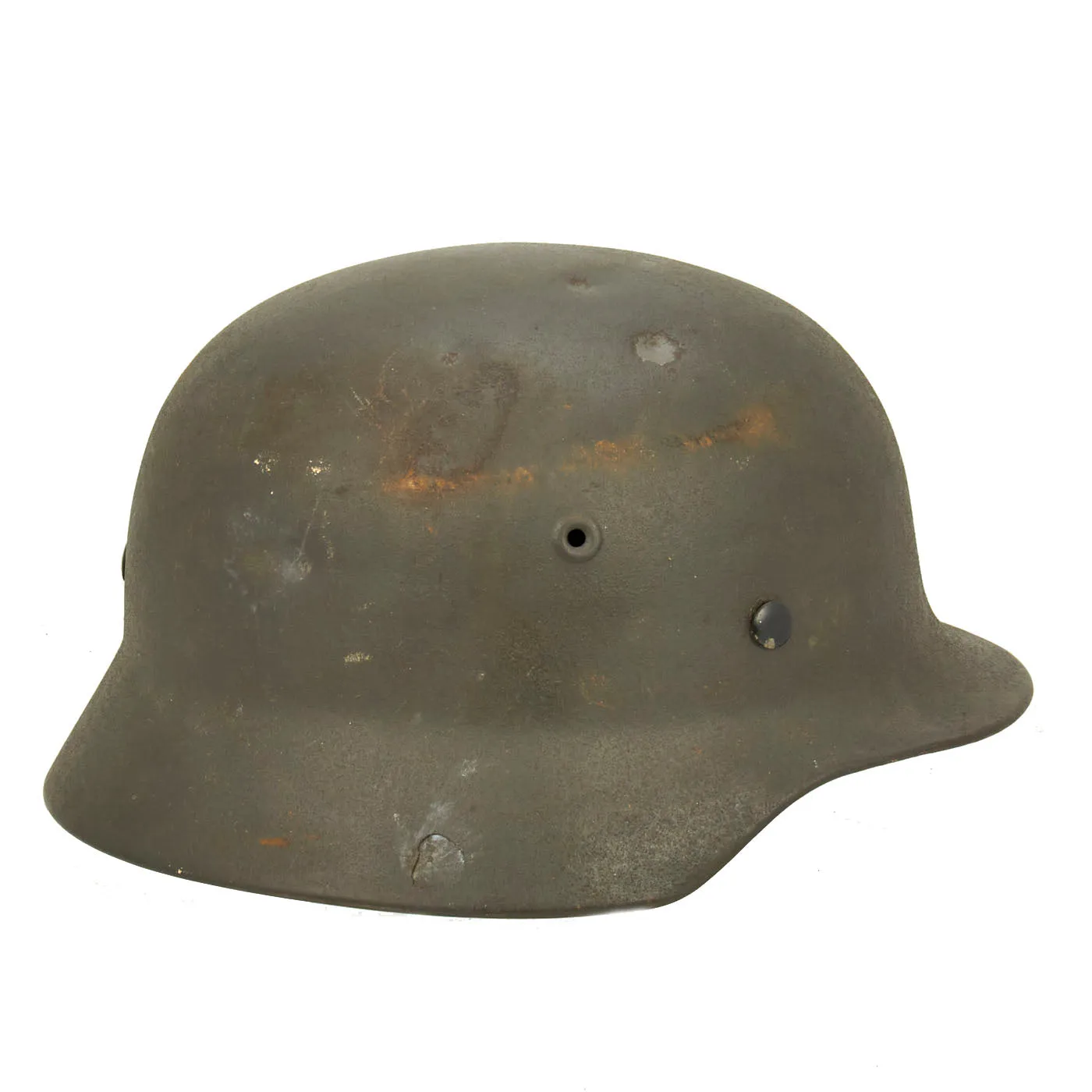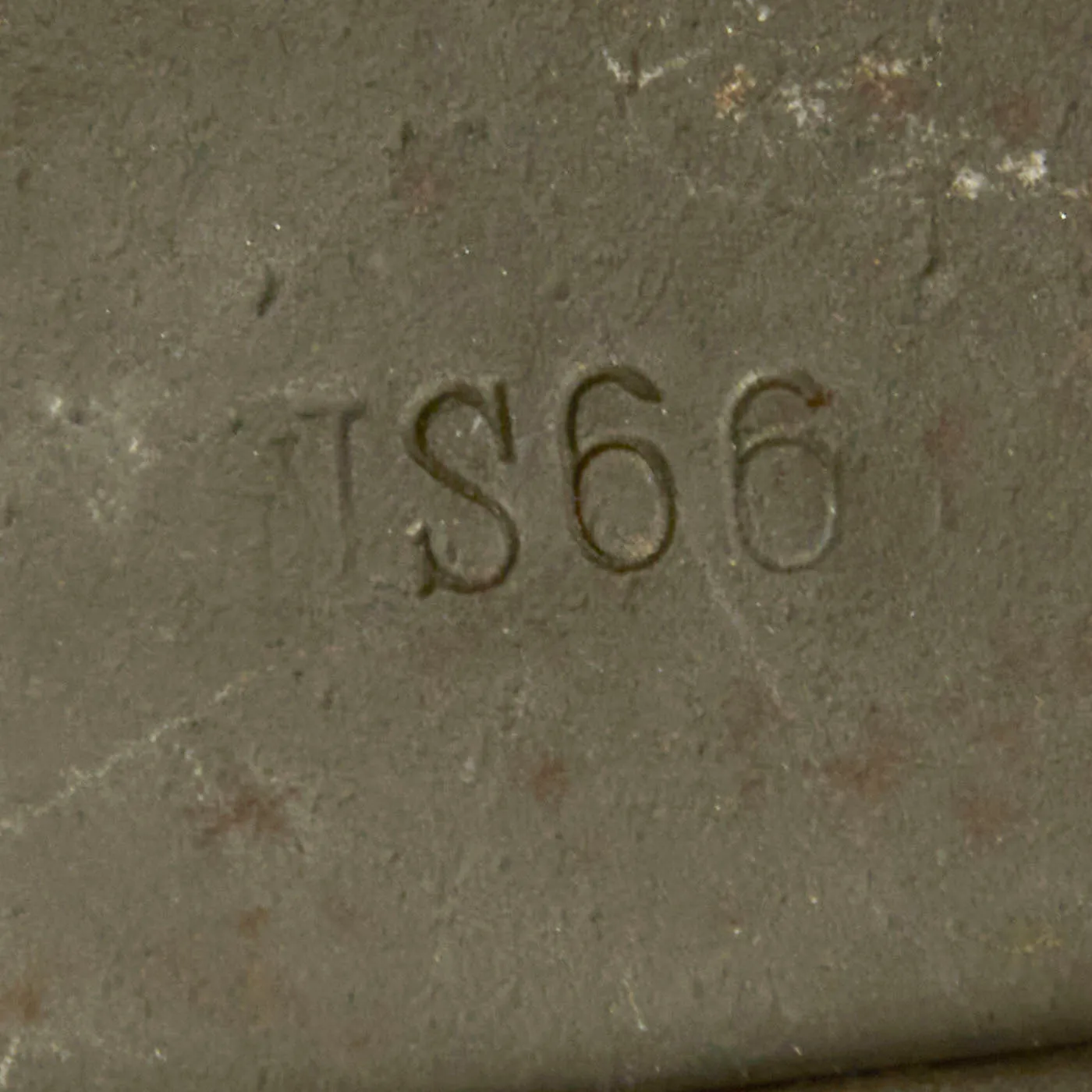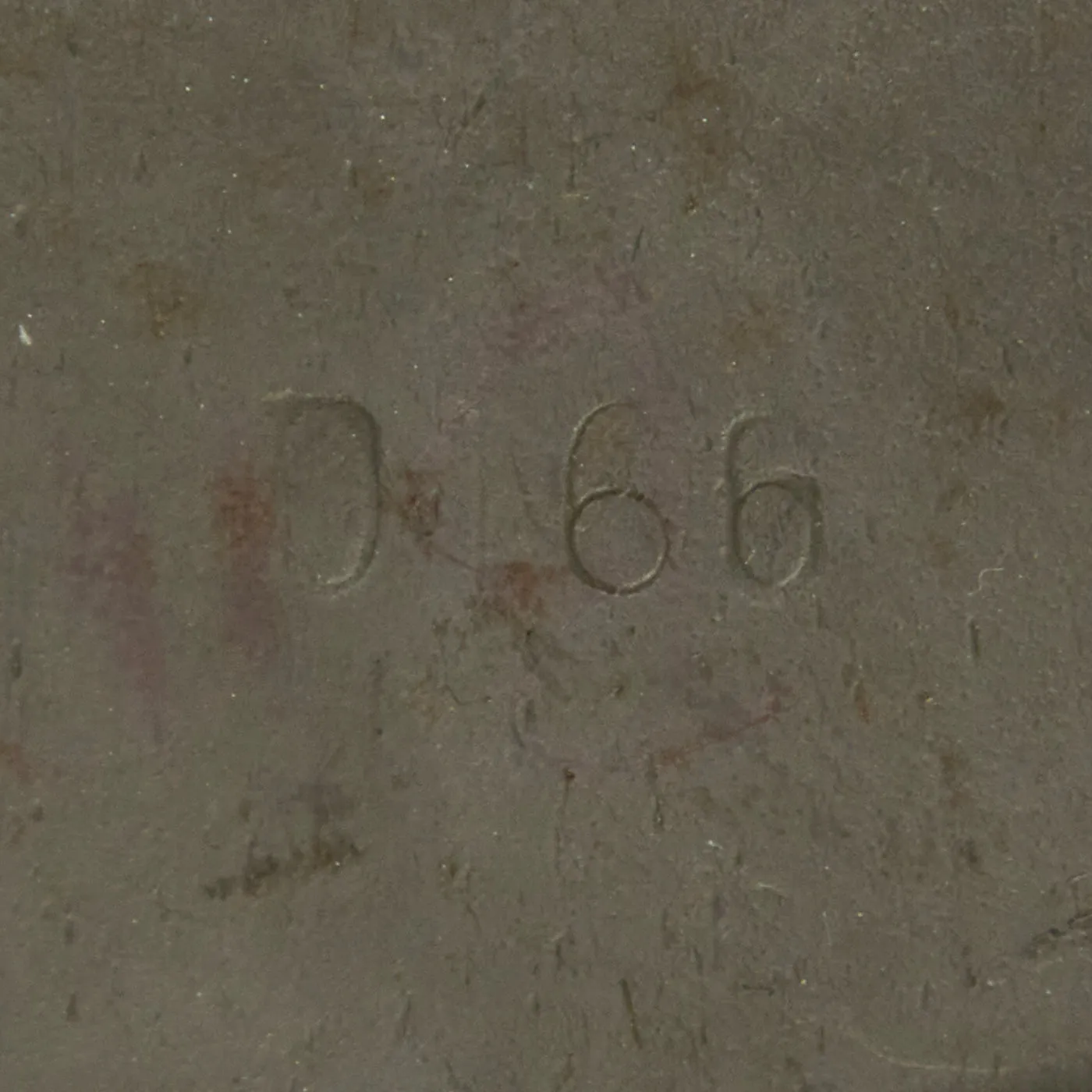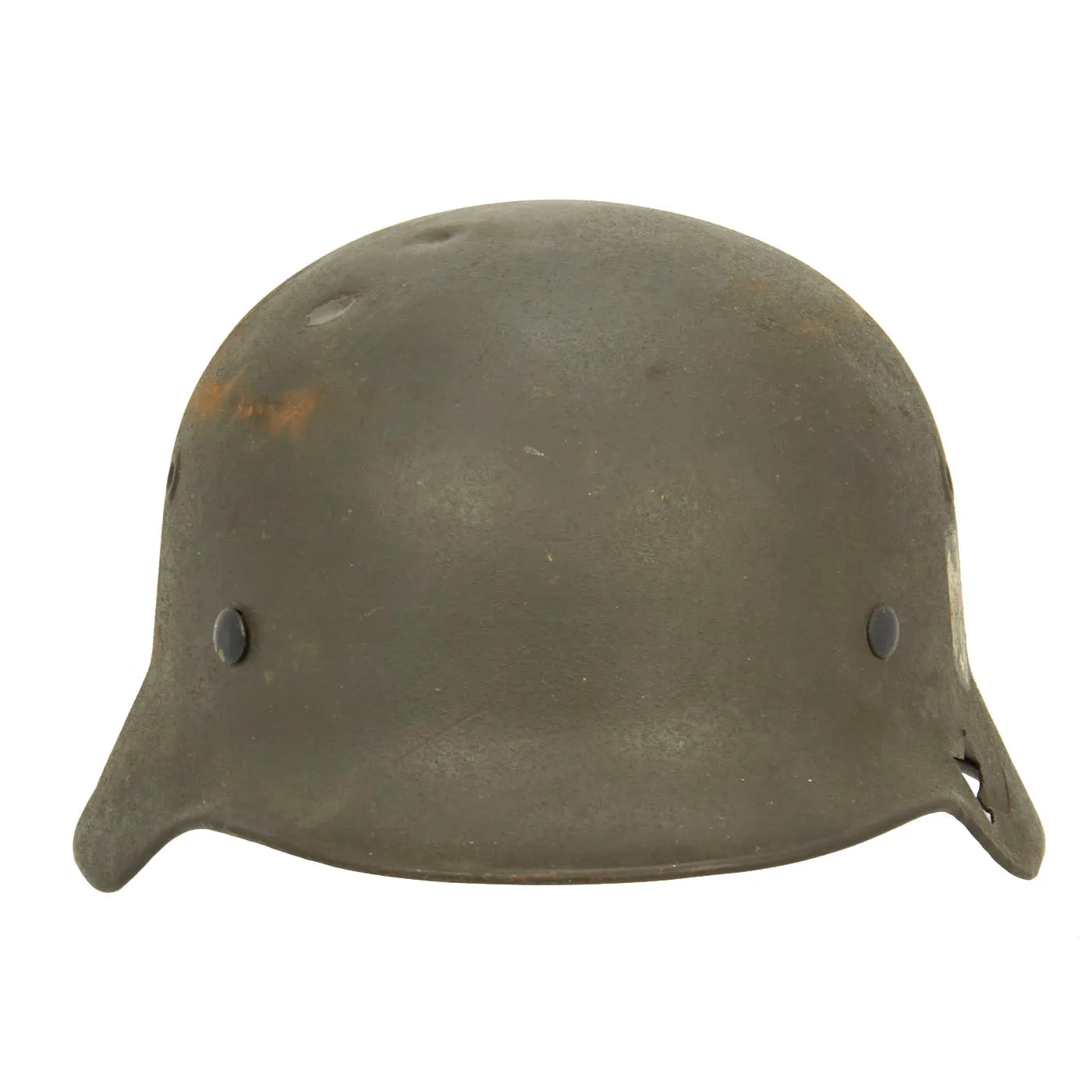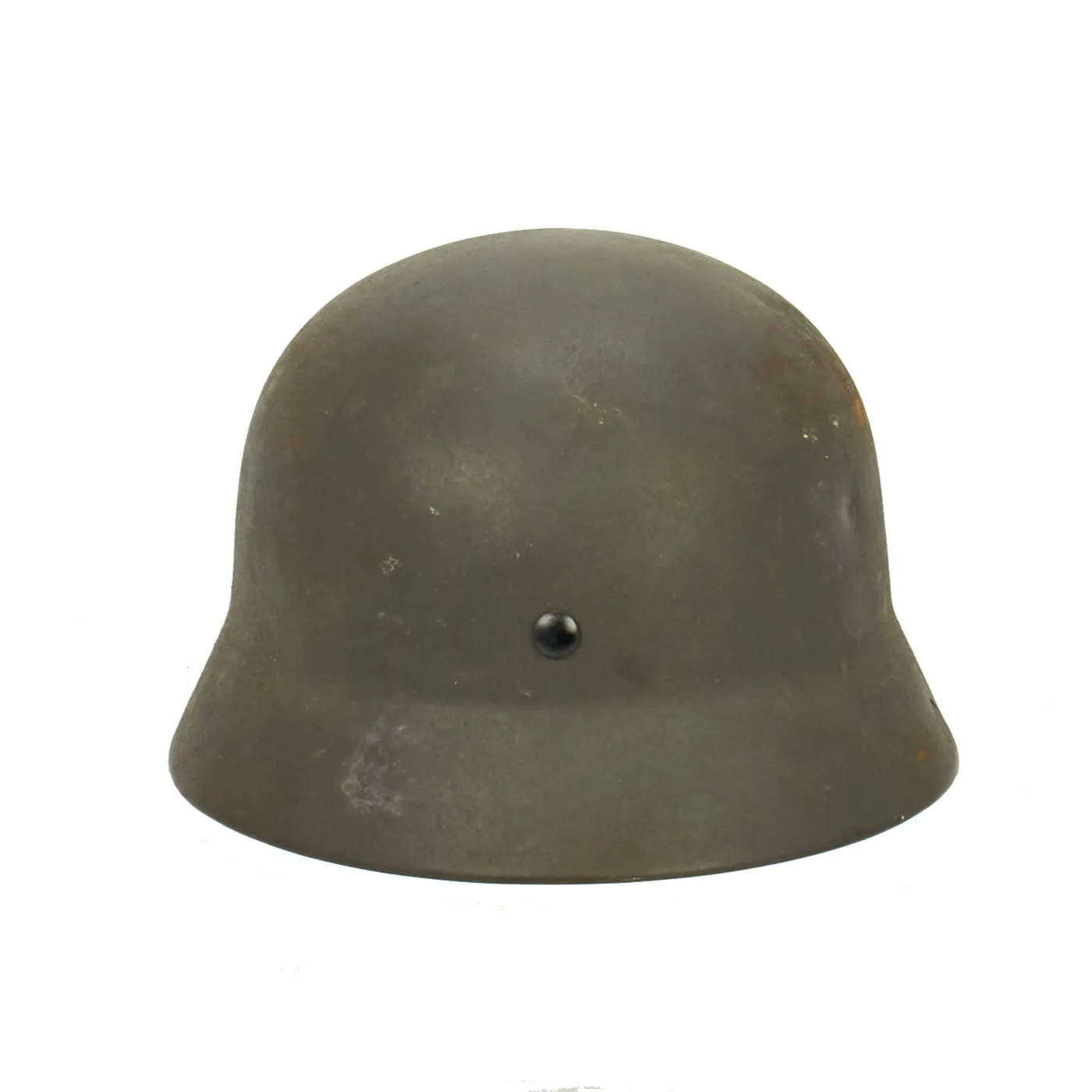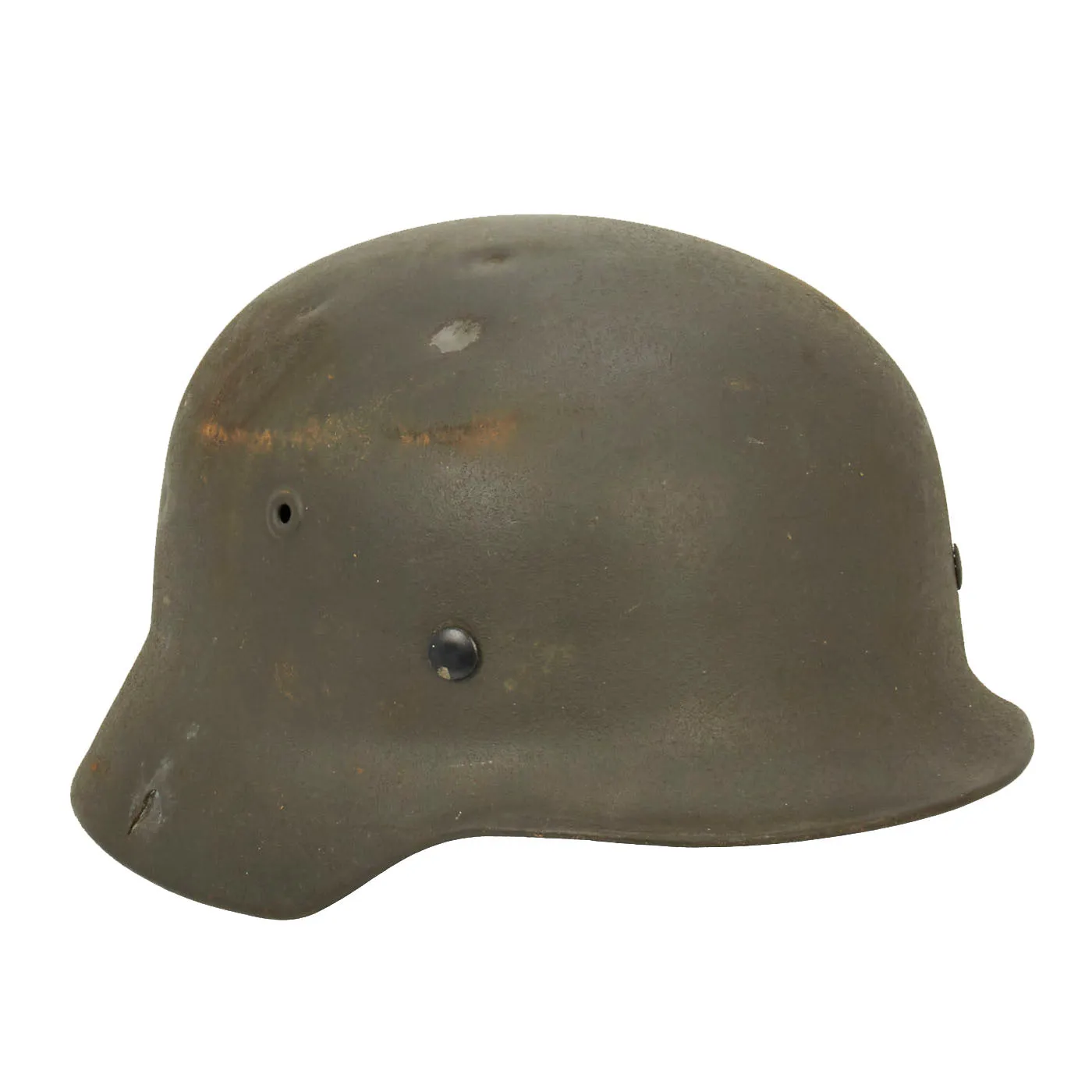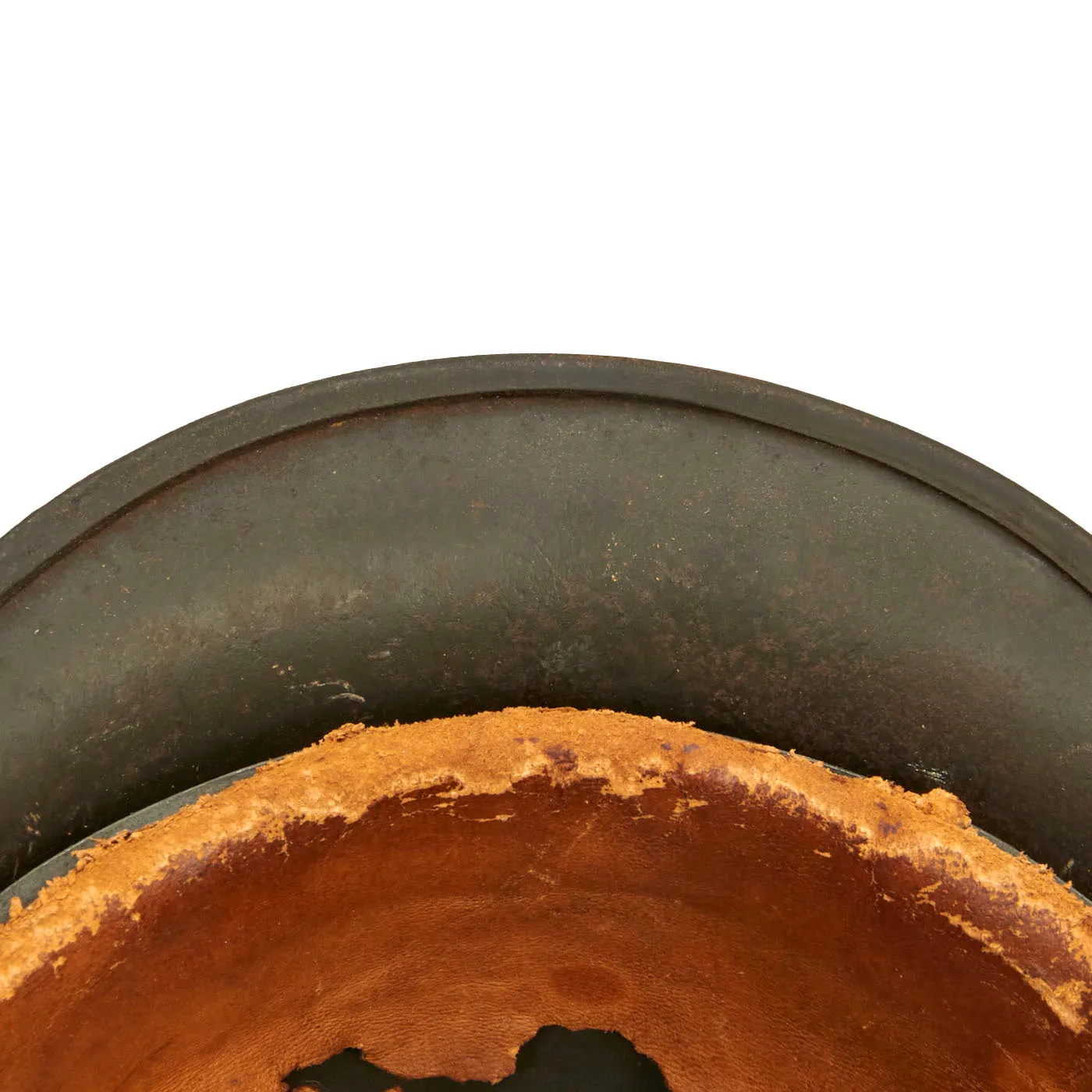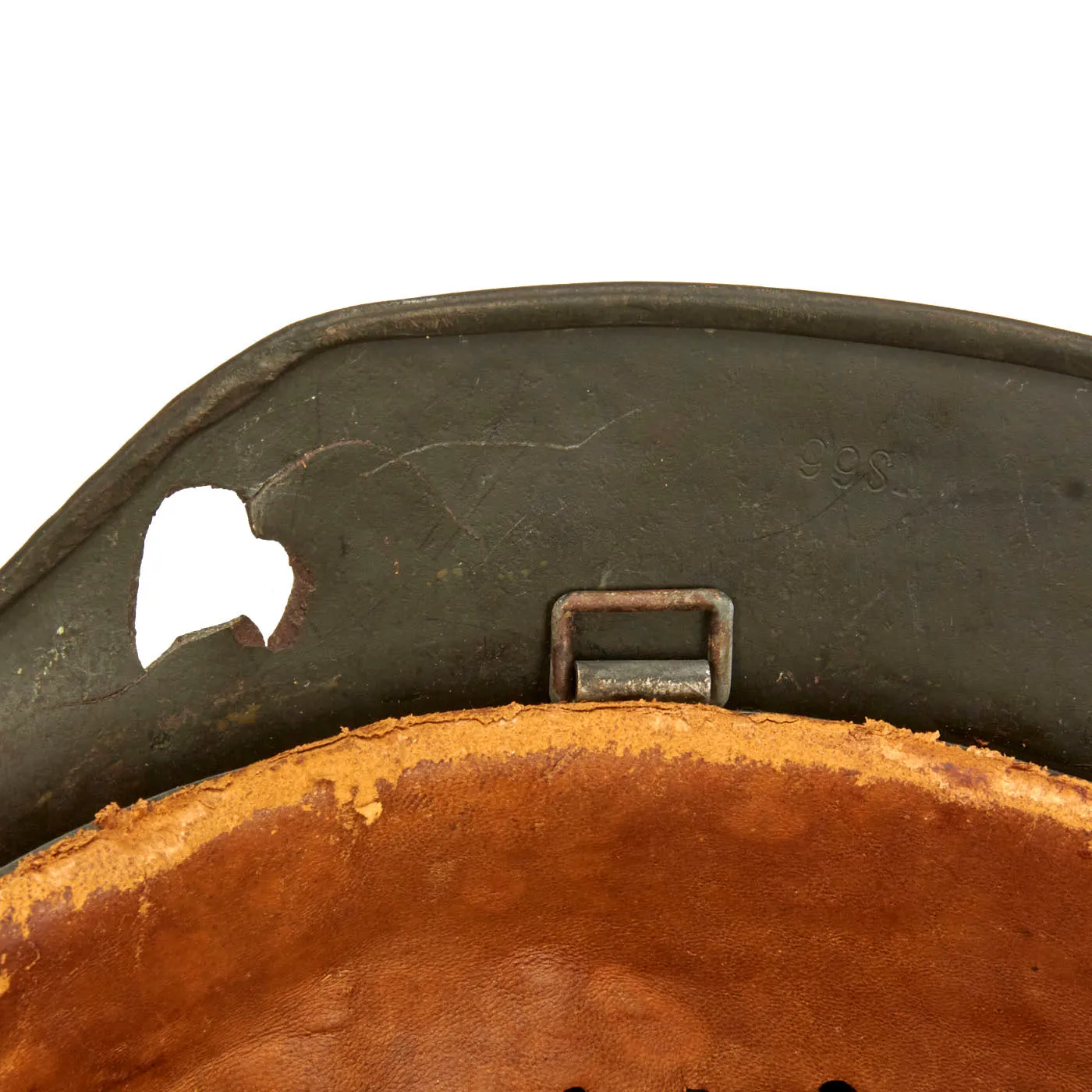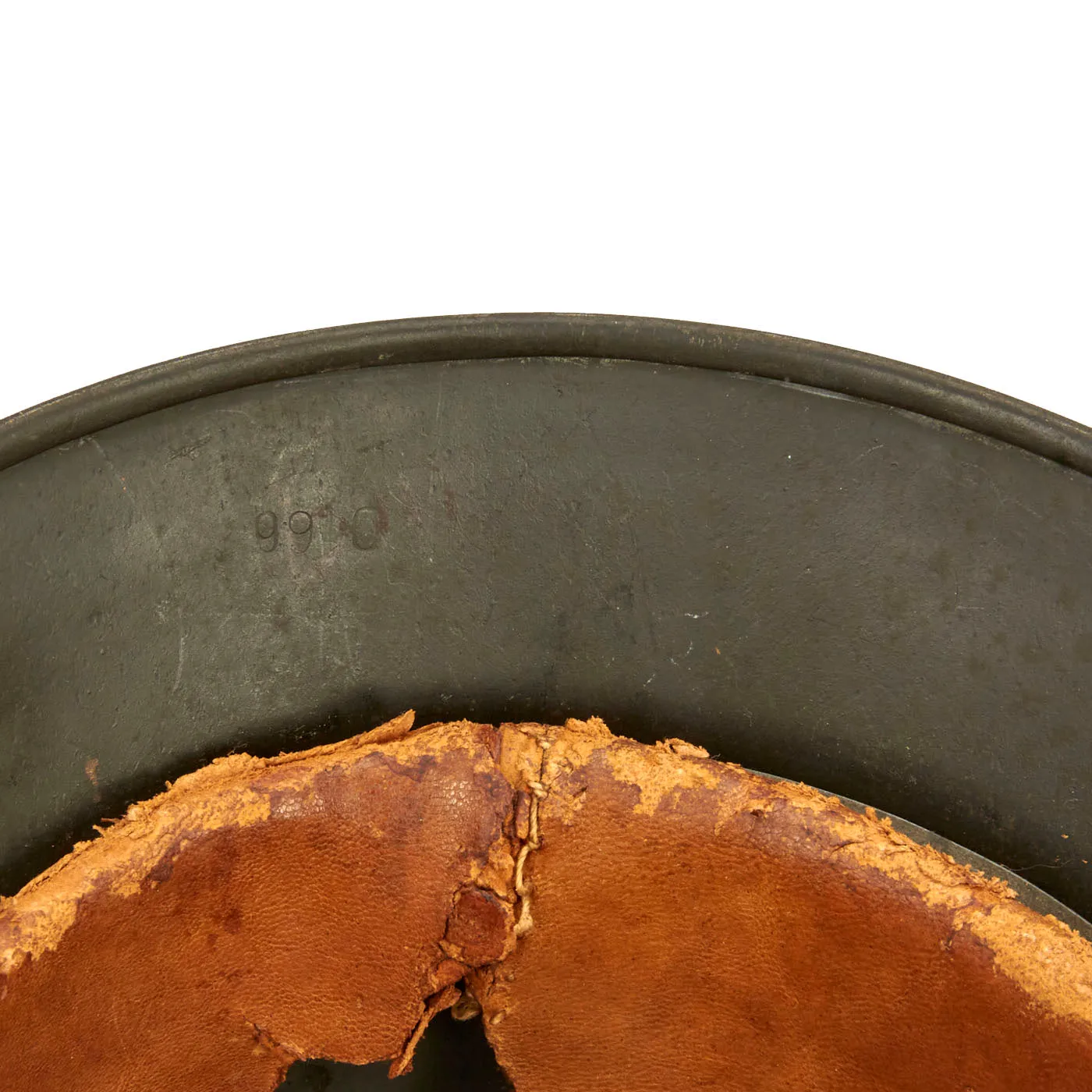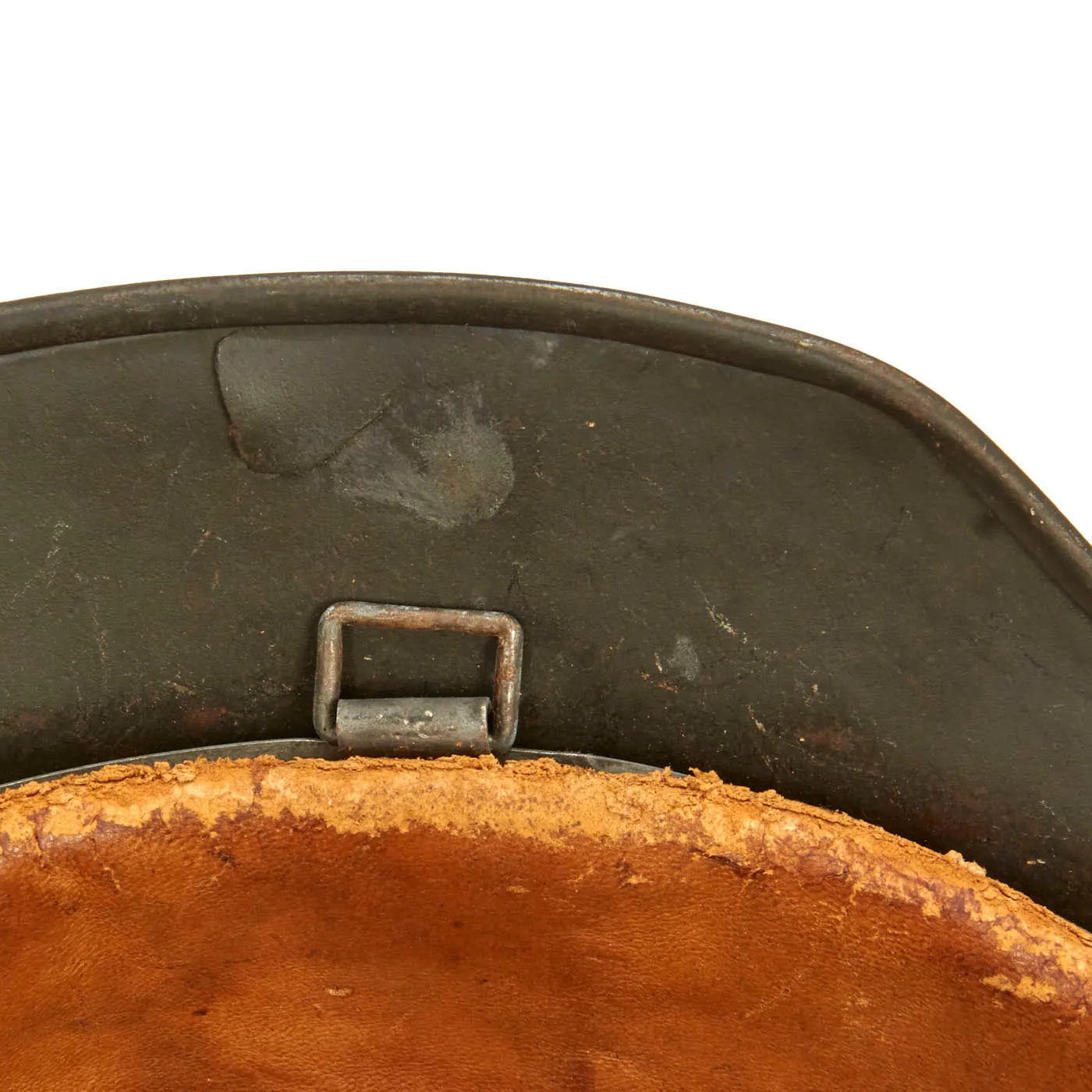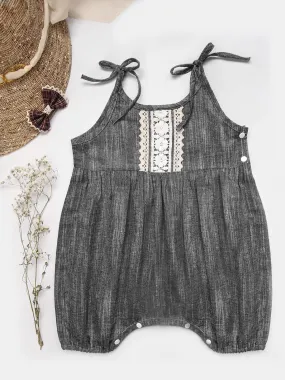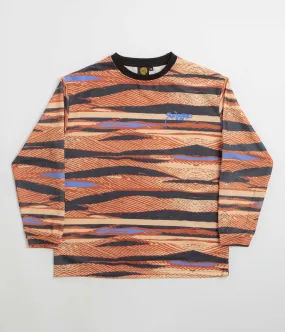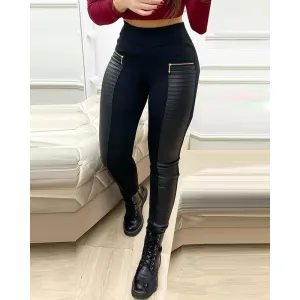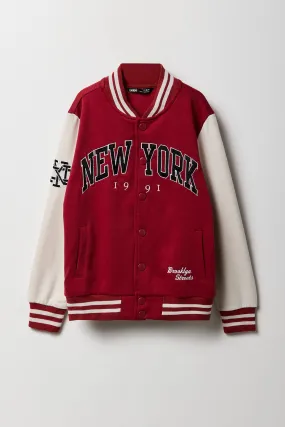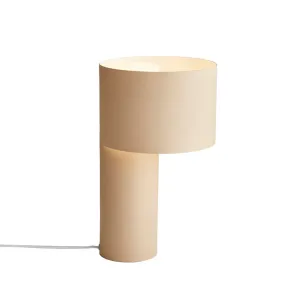Original Item: One-of-a-kind. This is a genuine USGI bring back Trophy of War, picked up off the battlefield after it was abandoned. The unique aspect of this particular "Shot Through" helmet is what looks to be a .30 caliber bullet hole on the lower left skirt of the helmet, just below the decal. There is also a cracked inward area on the other side, as well as 4 significant small dents on the right side of the helmet. There is no way to know whether this was from shrapnel or small arms fire, but the small dents definitely look too uniform to be from shrapnel. Definitely an interesting helmet!
Otherwise, this is a very good condition all original example of a German Model 40 Steel helmet, s issued to the Wehrmacht Heer (army). Aside from the battle damage, it shows only light service wear to the shell. This stamped sheet steel construction helmet retains 90% of its original lightly textured "panzergrau" paint, with some of the texture worn away. The left side of the helmet features a nice Heer eagle decal, which is retained about 85% with overall light wear. This is a very nice example of a battle damaged M40 helmet, with a great lightly worn look!
The reverse, interior, neck guard apron is serial number stamped, D166 and the interior, left side, apron has a stamped manufacturer's code and size, NS66 indicating that Vereinigte Deutsche Nikelwerke, of Schwerte, Germany manufactured it in size 66. Size 66 is a nice large size that can accommodate liners from 58cm to 59cm or US 7 1/4 to 7 3/8. Size 66 shells are harder to find and are therefore more valuable to a collector.
All three original liner retaining pins are intact and have most of the original paint on the ends, with some light wear from service. The interior of the helmet still has an original M31 leather liner, which unfortunately has had the leather degrade due to age and wear. It is worn around the entire edge, and only 5 of the "fingers" are still mostly intact. It looks like parts of the leather were torn or possibly cut away. The side of the galvanized steel liner band is marked 66 n.A. / 58, indicating that this is a size 56 liner for a size 64 shell. The right side displays the full manufacture information, as well as a date:
B. & C.
LITZMANNSTADT
1943
This liner was made by Biedermann & Czarnikow, a German company who moved operations to Łódź in occupied Poland to take advantage of the slave labor in the ghetto located there. NSDAP authorities renamed Łódź to Litzmannstadt in honor of the German General Karl Litzmann who had captured the city in the previous World War.
The chin strap on this helmet is unfortunately completely missing.
Overall a very nice 100% genuine M40 KIA Shot Through Heer Army Single Decal helmet! M40 helmets of this quality and history are always the hardest to find on the market. This is an item that will only continue to appreciate in value over time.
The first "modern" steel helmets were introduced by the French army in early 1915 and were shortly followed by the British army later that year. With plans on the drawing board, experimental helmets in the field, ("Gaede" helmet), and some captured French and British helmets the German army began tests for their own steel helmet at the Kummersdorf Proving Grounds in November, and in the field in December 1915. An acceptable pattern was developed and approved and production began at Eisen-und Hüttenwerke, AG Thale/Harz, (Iron and Foundry Works), in the spring of 1916.
These first modern M16 helmets evolved into the M18 helmets by the end of WWI. The M16 and M18 helmets remained in usage through-out the Weimar Reichswehr, (National Defence Force, Circa 1919-1933), era and on into the early years of the Third Reich until the development of the smaller, lighter M35 style helmet in June 1935.
In 1934 tests began on an improved Stahlhelm, whose design was a development of World War I models. The Eisenhüttenwerke company of Thale carried out prototype design and testing, with Dr. Friedrich Schwerd once again taking a hand.
The new helmet was pressed from sheets of molybdenum steel in several stages. The size of the flared visor and skirt was reduced, and the large projecting lugs for the obsolete armor shield were eliminated. The ventilator holes were retained, but were set in smaller hollow rivets mounted to the helmet's shell. The edges of the shell were rolled over, creating a smooth edge along the helmet. Finally, a completely new leather suspension, or liner, was incorporated that greatly improved the helmet's safety, adjustability, and comfort for each wearer. These improvements made the new M1935 helmet lighter, more compact, and more comfortable to wear than the previous designs.
The Army's Supreme Command officially accepted the new helmet on June 25, 1935 and it was intended to replace all other helmets in service.
More than 1 million M1935 helmets were manufactured in the first two years after its introduction, and millions more were produced until 1940 when the basic design and production methods were changed.




